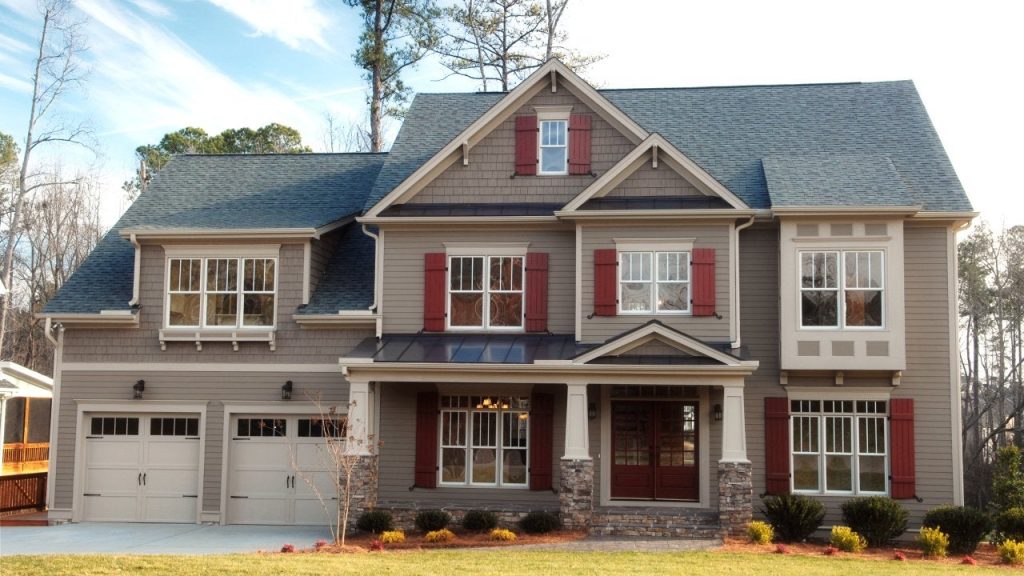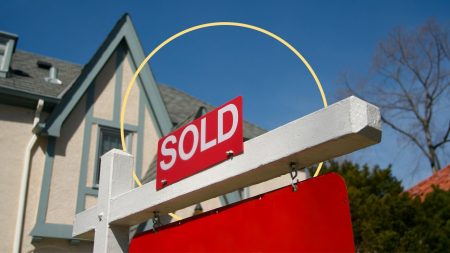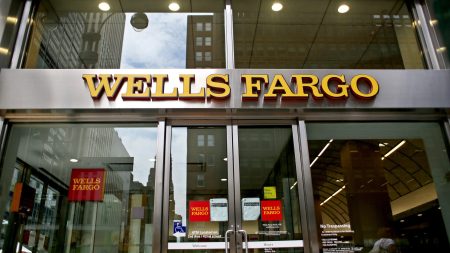Key takeaways
- You can tap your home equity with a cash-out refinance to cover the cost of improvements to make your home more energy-efficient.
- Conventional, FHA or VA energy-efficient mortgages allow homeowners to convert equity into cash to cover energy-efficiency upgrades.
- State and local governments may offer special energy-efficiency grants or financing programs.
Home values have skyrocketed in the past few years. As a result, many homeowners now have a substantial amount of equity. In fact, as of the first quarter of 2024, the average U.S. homeowner has $305,000 in home equity since they purchased their home, according to CoreLogic, a consultancy that tracks real estate and property data.
You could leave that money sitting in your home. But if you’re considering making improvements to your home to combat rising utility costs, you might use a portion of that equity to fund these enhancements. One way to do that is a cash-out refinance for energy-efficient improvements.
Let’s take a look at loans for energy-efficiency improvements and how one could help you.
$28,000
The average amount that homeowners have gained in equity in the past year
Source:
CoreLogic
What is a cash-out refinance for energy-efficiency improvements?
A cash-out refinance means swapping out your current mortgage for a new, bigger loan. You receive the difference — which is based on the size of your equity stake — in ready money, which you can use as you see fit. Your existing mortgage balance and the amount of equity you borrow against are both rolled into a single loan, and you’ll make new monthly payments to the refi lender. Depending on how much equity you have, the new loan could potentially be smaller than your original mortgage, but it will still be larger than the current amount you owe.
Assume your home is worth $425,000, and you currently owe $250,000 on your mortgage. You have $175,000 in equity in your home. If the lender lets you pull out as much as 80 percent of your home’s equity, you can cash out up to $140,000 to complete energy-saving improvements. When you close, your new loan amount will be $390,000 (the $140,000 you’re cashing out plus the $250,000 you still owe on the house), and you’ll receive the cash generally three business days after that.
You might also be able to deduct the interest on the equity you withdraw if you use the loan proceeds to make energy-efficient upgrades. These include permanent home additions, remodels and improvements that increase its longevity. (If not, you can still take the home mortgage interest deduction on the mortgage portion of the refi.)
“If you plan to sell your home in the future and the improvements will add value to your property value, then a cash-out refinance is a great idea,” says Melanie Hartmann, founder and CEO of Creo Home Buyers, a real estate investor based in Maryland. “You can save money on your energy bills and make most, if not all, of the money back that was spent on improving the value of your house.”
Let’s say you’re refinancing a home and thinking of installing solar panels. Not only will they likely increase your home’s resale value — meaning you can pocket more when you sell — but they can also lower your utility costs. That means seeing savings year after year.
Considerations before getting a cash-out refinance
Using refi loans for energy efficiency improvements (or any home improvements) can make a lot of sense in certain cases, but it’s important to think things through. Before you apply for a refinance, consider:
- Closing costs: Like any other refinance, a cash-out refinance for energy-efficient improvements comes with closing costs. If you can’t afford to cover these expenses, it might not be worth it to refinance.
- Moving plans: If you plan to move in a few years, refinancing to a new loan might not be the best move. You’ll be taking on more debt, which you’ll have to repay with the proceeds from your home sale.
- Rising mortgage rates: As rates remain relatively elevated right now, it’s even more important to consider the cost of borrowing. Refinancing rarely makes sense if it means you’ll be paying a substantially higher interest rate. If you want to tap your ownership stake to pay for a project, it might be wiser to finance it another way, such as with a home equity loan or line of credit (more on that below).
- Return on investment: Think about the cost relative to the savings. How long will it take you to recover your investment? The dip in your energy bills might help you recoup the money relatively quickly. As you crunch the numbers, though, don’t forget to factor in the interest you’ll pay on your refinanced mortgage.
Cash-out refinance vs. home equity loan: Which is better for energy improvements?
The best way to cover the costs associated with energy improvements will largely depend on the overall price tag of the project, how you’ll plan to pay for them, and the interest rate on your current mortgage.
A cash-out refinance provides access to a large, lump sum of money, which can be a good choice if you have specific, significant projects in mind. But if the interest rate on your existing mortgage is especially low, this may not be the best option, particularly if prevailing rates are now higher: You’ll end up paying more interest on your mortgage. Your upfront expenses will also be steep, as you’ll be required to pay the closing costs associated with refinancing an entire mortgage.
“Nearly 90 percent of all US mortgage borrowers have rates at or below 6 percent,” says Stephen Kates, CFP, the principal financial analyst for RetireGuide. “Refinancing your whole mortgage could be significantly more costly with a higher interest rate than maintaining your existing mortgage and taking out a smaller loan for the amount you need.”
In that case, a home equity loan or a home equity line of credit (HELOC) — which also let you borrow against your ownership stake — may be a better bet. HELOCs in particular allow funding to be tapped as needed during their draw period, which provides you with flexibility for long-term projects, says Andrea Altamirano, Sunrise Banks vice president mortgage loan program manager (like rewiring your entire house or installing a solar roof). “A HELOC might be more suitable if the improvements are relatively modest and can be spread over time,” says Altamirano. “The flexibility and lower initial costs are beneficial.”
HELOCs also typically feature lower upfront costs compared to a cash-out refi — there’s no title search or even a home appraisal sometimes. HELOC interest rates, which are variable, do trend a few percentage points higher than refi rates. But you’ll be paying that interest on a smaller sum, so you might still come out ahead, dollar-wise.
Keep in mind: Apply the savings you earn from the energy improvements to pay off the HELOC balance. This turns the endeavor into a ‘self-financing’ project.
Alternative energy-efficient home improvement loans
A cash-out refinance is one of many ways to fund energy-efficient home improvements. If you’re looking for energy-efficiency home improvement loans, consider the following options:
- Energy-efficient mortgages (EEM): These are loans for purchasing or refinancing a home that meets certain energy-efficiency requirements, or for improving a home to make it more energy-efficient. They can be a conventional loan, an FHA loan or VA loan. You can borrow up to 15 percent of the home’s appraised value to make energy-efficiency improvements.
- Fannie Mae/Freddie Mac renovation mortgages: Fannie Mae’s HomeStyle Renovation and Freddie Mac’s CHOICERenovation loans allow borrowers to either buy a place that needs repairs or refinance their existing mortgage and get money for improvements. Repairs or renovations cannot exceed 75 percent of the upgraded home’s appraised value.
- Home improvement loans: Although they are much more expensive, you might opt to use a personal loan to complete energy-efficiency projects. Personal loans — sometimes billed as “home improvement loans” — are readily available through traditional banks, credit unions and online lenders with loan terms typically from one to five years. The interest rates can be nearly 36 percent, however, so if your credit needs work, it might be best to explore other loans for energy efficiency improvements.
- Eco home improvement loans: Similar to personal loans, eco home improvement loans are disbursed in a lump sum and payable in monthly installments over time. The key difference is how you can use the funds: You’ll generally be limited to energy-efficient home upgrades. The lender might also request contractor quotes before approving you for financing.
Cash-out refinance to pay off PACE loans
While you can use a cash-out refinance to make energy-efficiency improvements, you might also be able to use these loans for energy-efficiency improvements you’ve already made. Specifically, you can use cash-out refis to pay off PACE (Property Assessed Clean Energy) loans. These are loans offered by state and local governments, payable through property taxes over a 10- to 20-year period. PACE residential loans are currently limited to residents in California, Florida and Missouri.
Ask your lender if you can add the PACE loan to the cash-out refinance. If so, the amount you owe will be paid off, along with your existing mortgage balance, as a part of the refinance to the new loan.
Government programs that help with energy-efficient home improvements
It never hurts to supplement financing with direct savings, and there are many incentives to make your home energy-efficient today.
- State and local programs: Check with the energy department in your state along with your local government for any special energy-efficiency grants or financing programs. The U.S. Department of Energy’s Weatherization Assistance Program, for example, offers low-income borrowers weatherization services, such as attic ventilation, solar screens and weatherstripping, to help with energy bills. If you’re eligible, you’ll apply through your state’s weatherization agency. Some utility providers also have their own programs that can help.
- The Inflation Reduction Act (IRA) of 2022: This act includes dozens of federal tax credits and finances state rebates for different energy-efficient or clean-energy home features, systems and appliances. In general, homeowners can receive a 30% tax credit toward the installation cost of these features, through tax year 2032 (and a lesser amount for two years after that). Eligible features can be as large as a solar roof, or as small as an insulated front door.
Additional reporting by Mia Taylor
Read the full article here










